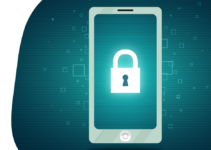Over the years, there have been many large and sometimes difficult changes that have taken across the world, and in education, it has been no different. One of the biggest challenges that the education sector has had to deal with is the changes that have come with digital transformation in the classroom. Technology is no longer a new concept and something that the education sector has now come to accept. Many schools avoid purchasing the latest and best gadgets and devices and instead their staff spends more of their time looking at which tools and resources will best benefit students and the education sector. Ultimately, they look at which digital technology will be the most effective and beneficial.
With so much technology to choose from, it’s not surprising that schools have encountered many challenges when it comes to, for example, internet connectivity, cloud computing, gamification, and cybersecurity. All of these help to enhance the learning environment for students. Below we will take a look at some of the challenges that digital transformation has caused in the education sector.
Cloud technology

img source: freepik.com
Cloud technology is being used more and more in educational settings and those that are not yet using it are likely to begin in the near future. Cloud technology can help to improve both the teaching and learning experience of students as it enables them to be able to access information from any device at any time and from anywhere.
Internet connectivity

img source: freepik.com
With educational settings using devices such as smartphones and tablets, new challenges have been created which relate to Wi-Fi connectivity and broadband bandwidths. Many educational settings will not have a suitable broadband width or Wi-Fi connectivity. Quite often, educational settings will just keep whatever they have in place already, irrespective of whether it works because changing this proves to be too much of a challenge. However, if the right company is used, things can be updated without causing too much impact or disruption in the setting.
As technology is developing so quickly, long-term contracts are no longer suitable in an educational setting. If something suits an educational setting this year, there’s no guarantee that it will in the next couple of years. For this reason, any contracts that an educational setting has in place need to be shorter than three years and educational settings need to ensure that they ask for an automatic increase in bandwidth so that they keep up to date with any technological requirements.
The best thing that an educational setting can do is to make sure that they plan ahead. So if a setting is thinking of buying a set amount of tablets over the next academic year, they need to consider whether this will work with the Wi-Fi connectivity and broadband bandwidth that is already in place in the setting. If these settings have the correct infrastructure in place, they will be able to adapt and change to technological advances.
The use of mobile phones in the classroom

img source: freepik.com
Mobile devices are not a new thing, and have been around for quite some time now, and it’s not unusual to see students with a mobile device. However, in recent times, smartphones have started to be used in the classroom, and it has been a subject of debate. On the one hand, many believe that they can help to improve a student’s education, but on the other hand, some argue that smartphones are nothing but a distraction.
In general, it’s believable that smartphones can help to improve education when they are used appropriately. For instance, students can use smartphones to access research material on the internet or to access educational apps as well as professional paper writing services, which can help them with their studies, i.e. follow this website, AdvancedWriters.com, for example. Also, a smartphone can be used to take videos or photos related to a topic they are studying.
Before introducing smartphones in a classroom, teachers need to be aware of how they will manage the technology. It’s crucial to ensure that smartphones are used in a controlled environment so that parents can feel some reassurance that they are being used safely.
Ultimately, students need to be prepared for their future careers which will incorporate technology of some form. For this reason, it’s clear to see the role smartphones can play in the classroom and other educational settings. By using smartphones, students will be well-equipped with the confidence and knowledge of how to use this technology and this will prepare them for when they are out of the classroom. Also, they can use smartphones to find some websites which can be of great help for them in future responsibilities they have.
Gamification

img source: freepik.com
There are many apps available on the market and the question that’s been around is whether gamification can have a positive impact on the teaching and learning of students. One aspect that needs to be considered is a game, for example, which has a different range of topics, subjects, and skills and comes with different levels based on a person’s ability and age. This kind of game will enable a student to work at their own pace, and it will also help them to overcome those traditional methods which may have been more difficult. The data that could be collected from such a game could be used to help prepare students for future work opportunities and skills.
Cybersecurity

img source: freepik.com
The use of the internet is on the increase and therefore cybersecurity is something that many educational settings continue to use. Even small educational settings need to be aware of scams and hacking as they can be targeted as much as a larger setting.
Malware and hacking have become more and more sophisticated for both students and staff, so they need to be aware of how to reduce risks, manage a situation, and identify any potential issues. Educational settings need to ensure that they use passwords or seek advice from an external company to help eradicate any weaknesses in their security system.
Educational settings have faced many challenges when it comes to digital transformations and once these challenges have been overcome, it’s clear to see that these changes can be viewed as beneficial and opportunities to enhance a student’s teaching and learning.



